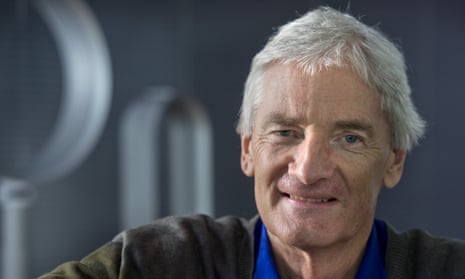Dyson is developing an electric car at its headquarters in Wiltshire with help from public money, according to government documents.
The company, which makes a range of products that utilise the sort of highly efficient motors needed for an electric car such as vacuum cleaners, hand dryers and bladeless fans, last year refused to rule out rumours it was building one.
But on Wednesday, the government appeared to have accidentally disclosed Dyson is working on one, along with other big companies outside of the automotive industry, such as Apple.
“The government is funding Dyson to develop a new battery electric vehicle at their headquarters in Malmesbury, Wiltshire. This will secure £174m of investment in the area, creating over 500 jobs, mostly in engineering,” said the National Infrastructure Delivery Plan, published on Wednesday.
When Dyson CEO, Max Conze, was asked last year if the company was working on an electric car, he said: “We are ruling nothing out. Like our friends in Cupertino [Apple] we are also unhealthily obsessive when it comes to taking apart our products to make them better.”
Dyson recently reported profits up 20% in 2015, driven by strong growth in China, and said it plans to invest £1bn in battery technology over the next five years. Last October, Dyson bought solid-state battery company, Sakti3, for $90m, which founder Sir James Dyson said had “developed a breakthrough in battery technology.”
Asked if the company was, as the government suggested, developing an electric car, a Dyson spokesman said: “We never comment on products that are in development.”
The Guardian has also contacted the Office for Low Emissions Vehicles, which encourages the roll-out of electric vehicles as a way to cut air pollution and lower carbon emissions, and is awaiting details on the exact level of funding.
Dyson, 68, has a long history of inventions. He designed the Rotork Sea Truck, a fast cargo boat in 1970, which has been used by the military and is still sold today. In 1974, he designed the Ballbarrow, a barrow with a ball replacing the wheel, having been frustrated by wheelbarrows getting stuck in mud on a building site.
His breakthrough was the bagless vaucum cleaner, which was inspired by air cyclones used in sawmills to suck up sawdust. Since then, he has created bladeless fans and the Airblade hand dryer.
Many of Dyson’s devices use small, light and efficient electric motors developed over 10 years by his company, which may find application in developing a new electric car. Dyson is a now worth several billion pounds and in 2014 pledged his company would spend £1.5bn on research and development to create future products, aiming to launch 100 new electrical products by 2018.

Comments (…)
Sign in or create your Guardian account to join the discussion